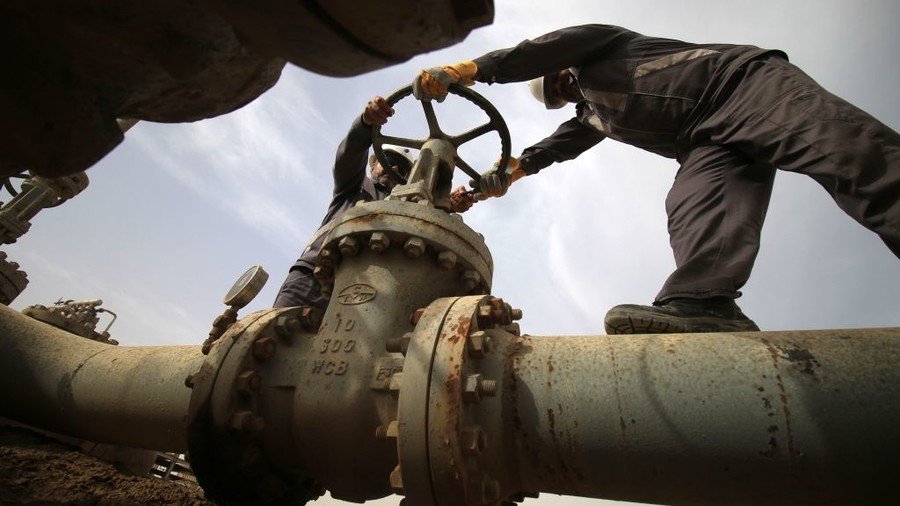What’s behind the latest oil price plunge?

The mercurial nature of the oil market has flipped the mood in the past two weeks from hysterical expectations of severely reduced supply from Iran to concerns over the pace of global economic and oil demand growth.
Trade wars, weakening emerging markets and currencies, and the strengthening US dollar began to overshadow market fears that OPEC leader Saudi Arabia, non-OPEC leader Russia, and their partners in the production cut deal may not be able to offset the loss of Iranian barrels and continuously falling production in Venezuela.
Then the market had to digest the latest geopolitical flare-up with the killing of a Saudi journalist critical of the Kingdom, the international outcry over the incident, and an initial veiled Saudi threat that it could retaliate to any potential sanctions over the death of Jamal Khashoggi.
Saudi Arabia admitted late last week that the journalist was killed in what it described as a “brawl” in the Saudi consulate in Istanbul.
While the market was weighing this development, oil prices were trending down and plunged on Tuesday to a two-month low, with both WTI Crude and Brent Crude slumping by four percent—the worst one-day drop since July.
The plunge was the result of several factors.
First, Saudi Energy Minister Khalid al-Falih stepped up rhetoric this week about how reliable Saudi Arabia is as a supplier, how it is ready to meet all customer demand there is, and how the Kingdom won’t weaponize oil and has no intention of repeating the 1973 oil embargo due to the Khashoggi case.
Next, the market has started paying more attention to the demand side of the equation, as concerns creep into the market about an imminent slowdown in global oil demand growth due to the high oil prices and strong dollar that weigh on emerging markets’ oil import bills, and looming global economic growth slowdown amid trade wars and tariffs.
Read more on Oilprice.com: Why US shale may fall short of expectations
Then, hedge funds and other money managers continued to liquidate long positions and take profits last week, building short positions in Brent and WTI.
The equity sell-off on Tuesday and the American Petroleum Institute (API) reporting a huge build of 9.88 million barrels in US inventories further dampened the mood on the oil market.
Earlier on Tuesday, market participants seemed to buy al-Falih’s latest assertion that “We will meet any demand that materializes” and that OPEC and allies are in a “produce as much you can mode.”
14yo oil leak might become worst US offshore disasterhttps://t.co/tgHFyJ8Ueq
— RT (@RT_com) October 24, 2018
At the Saudi conference dubbed ‘Davos in the Desert’—largely shunned by many because of the Khashoggi case—Saudi Aramco’s CEO Amin Nasser reaffirmed that Saudi Arabia’s 12 million bpd oil capacity “can be sustained for a long time, backed by among the largest reserves in the world, with the highest quality and the lowest cost of production.”
“While geopolitical factors raise the risk that Saudi Arabia backtracks on its supply commitments to offset Iranian sanctions, we do not expect production cuts given the resulting loss of market share to US shale and other oil producers,” JP Morgan said in a note on Monday, as carried by CNBC.
Read more on Oilprice.com: The world’s next offshore oil hotspot
Even before Tuesday’s oil price plunge, money managers, who had already started to liquidate long positions, continued to cut bullish bets last week.
The net long position—the difference between bullish and bearish bets—in WTI dropped 14 percent in the week to October 16, Bloomberg calculations of US Commodity Futures Trading Commission data show. Longs declined 7.1 percent, but shorts surged 38 percent to the highest number since November last year. The net long position in Brent also dropped 14 percent in the week to October 16.
Earlier fears of Iranian supply losses have been slowly turning into fears about the rate of growth in global economy and oil demand going forward, amid unstable emerging markets and currencies, rising dollar, trade wars, and tariffs all weighing on oil demand growth expectations. Rising US inventories have also added to the more bearish sentiment.
Saudi Arabia to invest $5bn in Russia’s future LNG project in Arctichttps://t.co/DoYYwhkz5Ipic.twitter.com/lqcqPgS84R
— RT (@RT_com) October 23, 2018
“While the negative impact of rising crude oil prices has yet to affect the 2019 demand outlook, there is no doubt that it will have an impact sooner rather than later,” Ole Hansen, head of commodity strategy at Saxo Bank, wrote in the bank’s recently published Q4 2018 Quarterly Outlook.
While lower supply from Iran and Venezuela and a thinning global spare capacity can be price-positive in the short term, “given the negative impact of the current dollar strength, rising US interest rates and trade wars, we believe that the global economy is not able to cope with runaway oil prices,” Hansen says.
Yet, Hansen notes, Saxo Bank understands the recent bullishness “as the oil market reacts first and asks questions only later.”
This article was originally published on Oilprice.com














